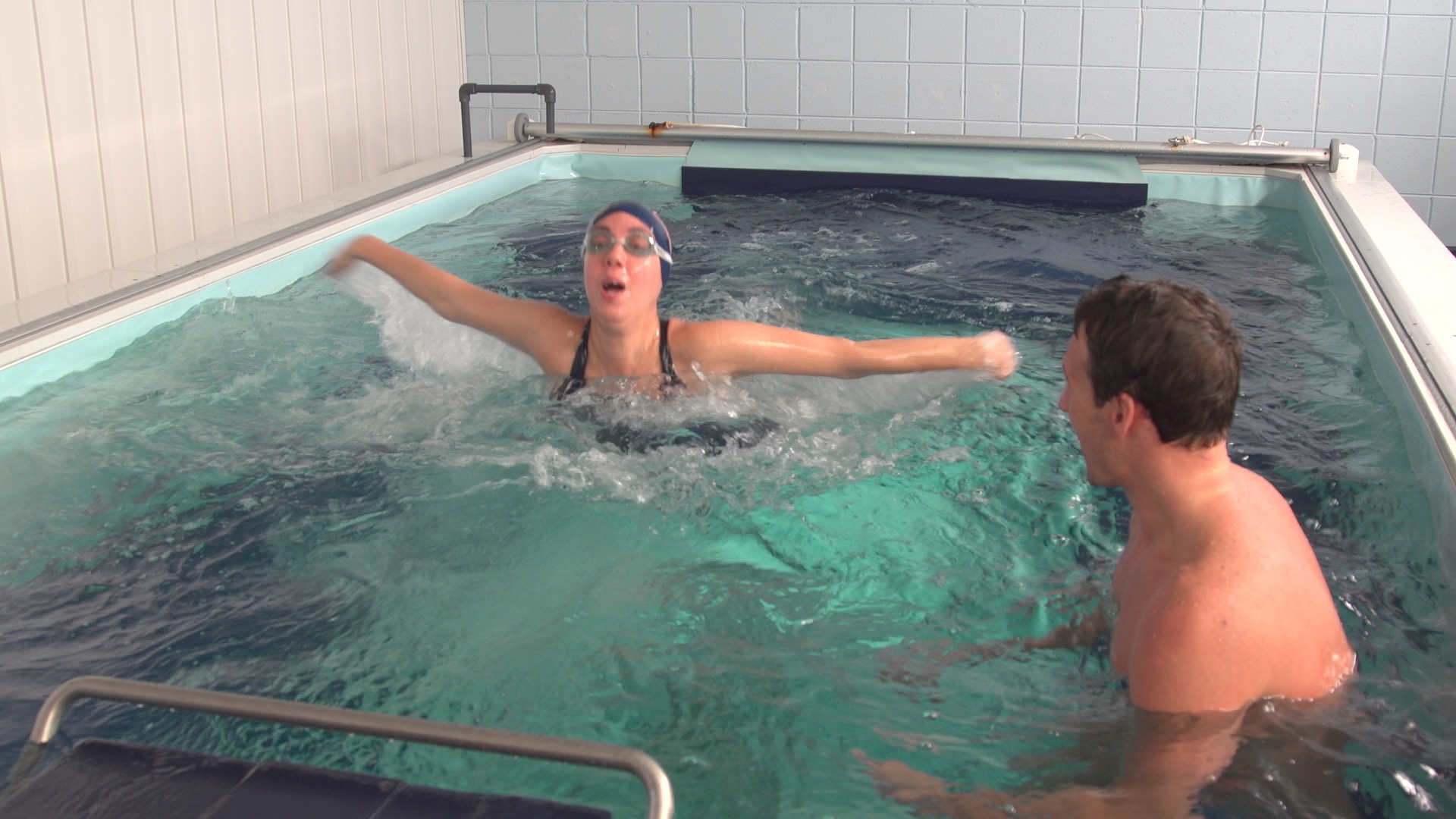CHARLOTTE — I’d told Ryan Lochte that I defined my swimming skill level as, “Capable of not drowning.” He laughed, but I think he really feared the worst — that I’d need floaties or something to make it through our swim lesson.
I’d thought it’d be pretty fun to have an 11-time Olympic medalist teach me each of the four strokes — freestyle, backstroke, breaststroke and butterfly — that have made him one of the greatest swimmers on the planet. I’d never swam competitively, so I barely knew anything about technique beyond freestyle, which most people know. And I could tread water pretty well!
My first moment of concern came when I popped into an athletic apparel store back in New York, trying to stock up on all the necessary gear. I wasn’t entirely sure what I needed beyond a bathing suit. There were two Speedos on the rack; one for a child and one two sizes too large for me. I erred on the side of baggy. I browsed the goggle and swim cap selection, blissfully oblivious to the differences or advantages in any particular style. I grabbed the slightly more expensive goggles and two swim caps. I had no idea if I purchased the right things.
(And I forgot to buy a cheap towel.)
By the time I got to Charlotte, I knew I had to follow through. Lochte and his coach thought the project sounded fun; I knew my performance — particularly as I attempted the butterfly — would be hilariously disastrous. I was game, but still nervous. I didn’t want to completely flail at every single stroke in front of one of the world’s best swimmers. And the probability of that happening still hovered around 80%.
One of Lochte’s female training partners helped me put on my swim cap, to the amusement of the rest of the group. Then Lochte and I jumped into a smaller training pool off to the side of the main Olympic-length pool — so, at least I would be shielded from excess ridicule. Besides, it was only about 3 feet deep, so the risk of drowning went way down.
The way the training pool operates is it allows you to pick the intensity of the current, so you can swim in place. There’s a bar, too, to work on kicking. Mirrors underwater and on the ceiling allow you to see your strokes and technique.
By the time our lesson began and Lochte began to teach, I loosened up. He had a knack for explaining complicated maneuvers in a very easy-to-digest way. In short, he was a great teacher. Despite the silly faces he made when I didn’t quite listen to his instructions — I forgot to breathe a few times — he was incredibly patient and helpful … except when it came to the fly. He had this devilish grin on his face as he tried to teach me the hardest stroke in swimming. Lochte knew I would look like a dead fish, trying not to drown; that is exactly what I looked like. Twice. He made me try it twice.
But for the most part, I think I impressed him. Maybe he thought I’d never actually taken a swim lesson before — and sure, it’d been about 20 years but that still counts — or he just underestimated my perfectionist nature. But I did learn a bit, and he told me afterward I should swim regularly. He and his coach, David Marsh, started googling pool locations in Manhattan for me to swim at in the future. Apparently they see the Olympics in my future (!) … or maybe just the step up from “not drowning.”
I'll pretend it's the former.

![Swim school with Ryan Lochte [video : 82373064]](http://videos.usatoday.net/Brightcove2/29906170001/2016/03/29906170001_4821402390001_video-still-for-video-4821368152001.jpg?pubId=29906170001)

